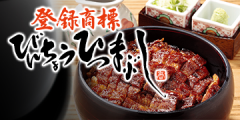- Home
- Sightseeing Spots
Sightseeing Spots
1 - 20 / 52 RESULTS
-
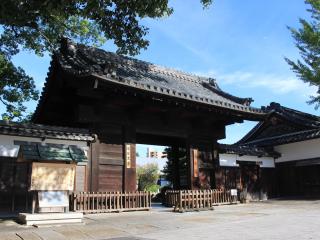
Eastern Area
Tokugawaen Garden
Tokugawaen Garden is a Japanese garden with walkways winding around a central pond in the style of major daimyo gardens from the Edo period. A clear stream flows from a waterfall through a ravine and continues to a pond representing the ocean, a sight that symbolically condenses Japan's natural landscape. Furthermore, Tokugawaen is characterized by hilly terrain, transplanted woods, and large rocks appearing from all angles. The overall magnificence of the daimyo garden can be seen through the use of bold changes in composition and the incorporation of a wide variety of elements. People can enjoy the garden throughout the four seasons with beautiful greenery, autumn colors, and flowers such as peonies and irises. See More
Tokugawaen Garden is a Japanese garden with walkways winding around a central pond in the style of major daimyo gardens from the …See More
-
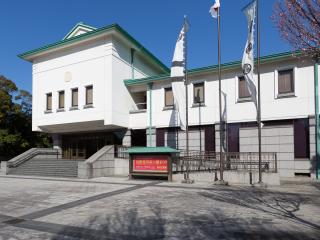
Eastern Area
The Tokugawa Art Museum
An art museum of important artifacts from the Owari Tokugawa family, including items inherited from Tokugawa Ieyasu This art museum has a collection of more than 10,000 feudal lord implements, starting with items that once belonged to Tokugawa Ieyasu, and items treasured by the first head of the Owari Tokugawa family, Yoshinao (Ieyasu's ninth son), and his descendants. The museum is proud to hold nine National Treasures, including the Illustrated Scroll of The Tale of Genji, 59 important cultural properties, and many other high quality treasures that have been preserved in good condition. The main hall is registered as a national tangible cultural property. See More
An art museum of important artifacts from the Owari Tokugawa family, including items inherited from Tokugawa Ieyasu This art m…See More
-

Eastern Area
Higashiyama Zoo and Botanical Gardens
A "forest where you can meet the animals of the world" surrounded by nature in the middle of a city There are tons of popular animals at this zoo! From tiny medaka fish to huge elephants, it is home to the largest number of animals in Japan. Come and see the wide variety of animals. There are many facilities, including the gorilla and chimpanzee house—home to famously handsome gorilla Shabani—the Asian elephant house, and the koala house. Here, you can not only watch the animals, but also learn about their ecologies and habitats through educational displays, so you can learn while having fun. Including the greenhouse and the natural woods on the hillsides, the botanical garden is home to around 7,000 species of plants. The cherry blossom pathway has around 1,000 cherry trees of about 100 different species, which all bloom in the spring. In the fall, around 500 trees—mainly su… See More
A "forest where you can meet the animals of the world" surrounded by nature in the middle of a city There are tons of popu…See More
-
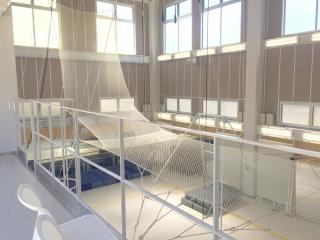
Eastern Area
Fly'n Fit Trapeze Studio
See More
See More
-
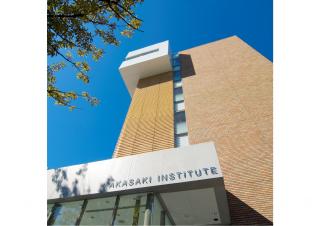
Eastern Area
Nagoya University Akasaki Institute
The Akasaki Institute was built to commemorate the research achievements of Distinguished Professor Isamu Akasaki, promote original and cutting-edge scientific and technological research at Nagoya University, and contribute to society at large. The exhibition room on the first floor is free to enter and open to the public. On display are a 160-inch LED display, traffic lights and mobile phones using blue light-emitting diodes, Professor Akasaki's research achievements, and experimental equipment. In addition, you can see an official replica of the Nobel Prize medal awarded to Professor Akasaki and Professor Hiroshi Amano in 2014, as well as the same equipment that Professor Akasaki donated to the Nobel Museum. See More
The Akasaki Institute was built to commemorate the research achievements of Distinguished Professor Isamu Akasaki, promote origin…See More
-
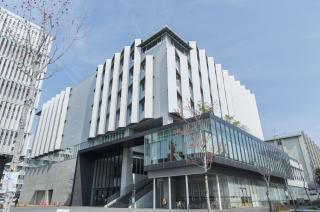
Eastern Area
Nagoya University 2008 Nobel Prize Exhibition Hall
This exhibition hall was opened to commemorate the 2008 Nobel Prize in Physics awarded to Dr. Toshihide Masukawa and Dr. Makoto Kobayashi, both graduates of Nagoya University, and the 2008 Nobel Prize in Chemistry awarded to Dr. Osamu Shimomura, a former assistant professor at the same university. It displays official replicas of Nobel Prize medals and numerous explanatory panels on Nobel Prize research, allowing visitors to get up close and personal with the research that led to the Nobel Prize. It also introduces some of the research and educational styles of the Shoichi Sakata Laboratory (Elementary Particle Theory Laboratory, commonly known as "E-Lab"), which produced Dr. Masukawa and Dr. Kobayashi, and the Yoshimasa Hirata Laboratory, which trained Dr. Shimomura. See More
This exhibition hall was opened to commemorate the 2008 Nobel Prize in Physics awarded to Dr. Toshihide Masukawa and Dr. Makoto K…See More
-

Eastern Area
Nagoya University Chemistry Gallery (Noyori Materials Science Laboratory)
This gallery on the second floor of the Noyori Materials Science Laboratory was built to commemorate Nagoya University Distinguished Professor Ryoji Noyori, who received the Nobel Prize in Chemistry in 2001. It is open to the public with the aim of widely communicating the importance of chemistry to the general public and nurturing the next generation of researchers, and includes an exhibition room related to Distinguished Professor Noyori's Nobel Prize with the Inspiration Space for the Next-generation Researchers, Introduction to Dr. Noyori's Footsteps, and other sections. See More
This gallery on the second floor of the Noyori Materials Science Laboratory was built to commemorate Nagoya University Distinguis…See More
-
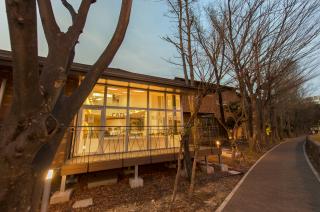
Eastern Area
Nagoya University Gender Research Library
The Gender Research Library is open to anyone interested in gender issues. You can browse books related to women's, feminism, and gender studies, as well as various archives and collections. The library also plans and holds lectures, seminars, reading groups, etc. in the library's lecture rooms. See More
The Gender Research Library is open to anyone interested in gender issues. You can browse books related to women's, feminism, and…See More
-
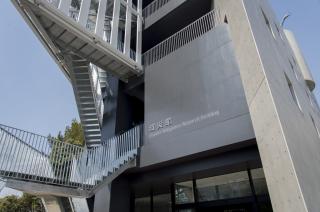
Eastern Area
Nagoya University Disaster Mitigation Research Building
Nagoya University’s Disaster Mitigation Research Building is a base for the realization of a disaster-mitigating society through collaboration between industry, academia, government, and the private sector. It is the university's first seismically isolated building and is equipped with self-powered and solar power generation equipment. In normal times, it serves as a place for cutting-edge research into disaster prevention and mitigation as well as a learning space open to the public. Should a large-scale disaster occur, it acts as a base for disaster response by the university and local area. In addition, it is equipped with a ground monitoring system as well as an experimental facility that reproduces large-amplitude, long-period seismic shaking, and the entire building serves as a place for the development and testing of architectural earthquake-resistance technology. See More
Nagoya University’s Disaster Mitigation Research Building is a base for the realization of a disaster-mitigating society through …See More
-
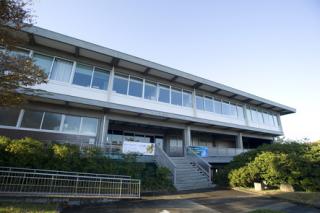
Eastern Area
Nagoya University Museum
Nagoya University Museum was established in April 2000 as the fifth integrated university museum in Japan. Its purpose is to comprehensively and internationally provide feedback, resources, and social return on the academic specimens and materials of Nagoya University, as well as the results of university research. It has six main missions: Research, Education for the Next Generation, Exhibitions, Creation and Inheritance of Knowledge, Specimen Collection, International Exchange, etc. See More
Nagoya University Museum was established in April 2000 as the fifth integrated university museum in Japan. Its purpose is to comp…See More
-
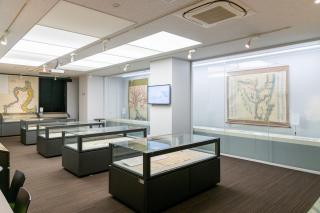
Eastern Area
Ogaki Kyoritsu Bank Takagi Family Documents Exhibition Gallery (inside Nagoya University Central Library)
The Ogaki Kyoritsu Bank Takagi Family Documents Exhibition Gallery is located in a corner of Nagoya University's Central Library, and as a permanent exhibit, it displays replicas of the Takagi Family Documents owned by Nagoya University (the establishment also holds special exhibits on other materials in the collection). The Takagi Family Documents are a collection of documents formerly owned by the Nishi Takagi family, a hatamoto clan whose fief was Tokigo and Tarago in Ishizu County, Mino Province (present-day Kami-Ishizu Town, Ogaki City, Gifu Prefecture), and some of them have been designated as Important Cultural Properties by the nation under the name "Kotai Yoriai Nishi Takagi Family-related Materials". There is no admission fee, and anyone can view them. You can also freely tour the Central Library by signing your name at the reception desk. See More
The Ogaki Kyoritsu Bank Takagi Family Documents Exhibition Gallery is located in a corner of Nagoya University's Central Library,…See More
-
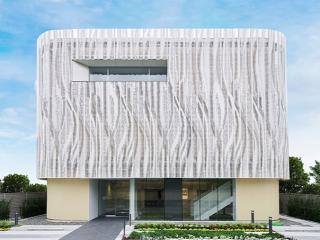
Eastern Area
Hoyu Hair Color Museum
Japan's first museum specializing in hair color, the widely known hair coloring company Hoyu opened the Hoyu Hair Color Museum as part of its 100th anniversary commemoration project. The museum highlights the culture and history of hair dyeing in Japan and Hoyu's history and involvement in the field. See More
Japan's first museum specializing in hair color, the widely known hair coloring company Hoyu opened the Hoyu Hair Color Museum as…See More
-
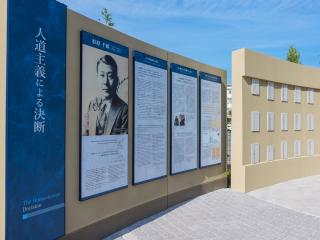
Eastern Area
The Sugihara Chiune Square - Sempo Sugihara Memorial
The Sugihara Chiune Square is an outdoor exhibition facility dedicated to honoring the humanitarian achievements of Chiune Sugihara, known for the "Visas for Life." The facility showcases life-size bronze statues of Sugihara and a Jewish family, as well as reproductions of visas on ceramic plates. Additionally, it displays historical materials from Sugihara's time at the former Aichi Prefectural Fifth Middle School (now Aichi Prefectural Mizuho High School). See More
The Sugihara Chiune Square is an outdoor exhibition facility dedicated to honoring the humanitarian achievements of Chiune Sugiha…See More
-

Eastern Area
Currently Closed
Mandolin Melodies Museum *closed
Records featuring mandolin music since 1920 and mandolins are displayed. Approximately 220 SP records, about 140 LP records, about 10 EP records, and approximately 400 CDs are displayed. Visitors wishing to listen to them can listen in the museum for a charge (SP: 300-yen, LP and CD: 100-yen). See More
Records featuring mandolin music since 1920 and mandolins are displayed. Approximately 220 SP records, about 140 LP records, abou…See More
-

Eastern Area
Shiroyama Hachiman Shrine
In the entire Joyama Forest area, there used to be a castle called Suemori Castle, which was built by Oda Nobuhide. After Nobuhide's passing, his son Nobuyuki took over, but he was defeated by his older brother Nobunaga, leading to the castle's abandonment in just about ten years. On the site of this castle, the Joyama Hachimangū Shrine was established. The shrine attracts many visitors during events such as the first shrine visit of the New Year, the summer ritual of passing through the ring of sedge, and the autumn visit of three and five-year-old children for blessings. See More
In the entire Joyama Forest area, there used to be a castle called Suemori Castle, which was built by Oda Nobuhide. After Nobuhid…See More
-
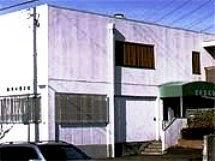
Eastern Area
Araki Shuseikan Museum
In 1952, Araki Minoru, a junior high school teacher at the time, began his journey into archaeology when one of his students discovered a single piece of pottery. Motivated by this find, he took it upon himself to establish a museum. The museum, called "Touzan Ancient Kiln Site Group," proudly exhibits excavated artifacts from archaeological sites in Chikusa, Showa, and Tempaku wards in Nagoya, in a permanent exhibition on the second-floor gallery. Additionally, on the first floor, they regularly host three annual exhibitions, each lasting four months, showcasing a various range of individual collections. See More
In 1952, Araki Minoru, a junior high school teacher at the time, began his journey into archaeology when one of his students disc…See More
-

Eastern Area
Yokoyama Art Museum
Opening October 1, 2017 in Higashi-ku, Nagoya. Find pottery and ceramics made for export during the Meiji and Taisho eras displayed, with a focus on items returning back home to where they were made. You can view a number of dramatic pieces with awe-inspiring detail such as pieces made in the Nagoya area for export, old Noritake pieces which are the first western-style pottery and ceramics of Japan, and rarely viewable Sumida-yaki gathered up by type. See More
Opening October 1, 2017 in Higashi-ku, Nagoya. Find pottery and ceramics made for export during the Meiji and Taisho eras displa…See More
-

Eastern Area
Nagoya Ceramics Hall
This retro Showa-style modern building was built in 1932 as the office for the Nagoya Ceramic Trading Union. The exterior features a large half-circle window and terracotta bricks, and all four sides are covered in ceramic scratch coat tiles. The interior has Art Deco-style ceiling decorations and Ina ware mosaic floor tiles. The areas open to the public on the first floor include exhibitions of ceramic ware made in Nagoya before and after the war, a painting workshop, and a shop selling ceramics. The second floor and above are rented out to tenants—primarily architectural and design. See More
This retro Showa-style modern building was built in 1932 as the office for the Nagoya Ceramic Trading Union. The exterior feature…See More
-
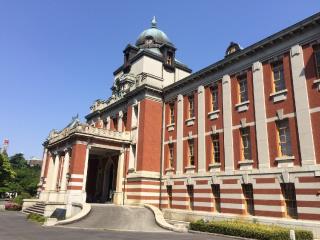
Eastern Area
Nagoya City Archives
This site once housed the Nagoya Court of Appeals, District Court and Ward Court buildings. The Court of Appeals building, the oldest such building still in existence, was built in 1922 and is now a national cultural asset. There is much to see here, including one of Japan's best stained-glass windows, a reproduced courtroom under the old Constitution, a restored conference hall, prisoner lock-up and a commemorative exhibit from the Expo 2005 Aichi. See More
This site once housed the Nagoya Court of Appeals, District Court and Ward Court buildings. The Court of Appeals building, the ol…See More
-

Eastern Area
War and Peace Museum: Peace Aichi
War and Peace Museum: Citizen-Operated This museum was established and is operated by citizens with the aim of learning, preserving, and taking action against wars for the sake of future peace. It was opened in 2007. With approximately 5400 wartime materials donated by citizens, the museum features permanent and special exhibitions, as well as events such as war survivors' narratives, recitals, and lectures. It serves as a museum-level facility dedicated to promoting peace and war education. See More
War and Peace Museum: Citizen-Operated This museum was established and is operated by citizens with the aim of learning, preserv…See More













